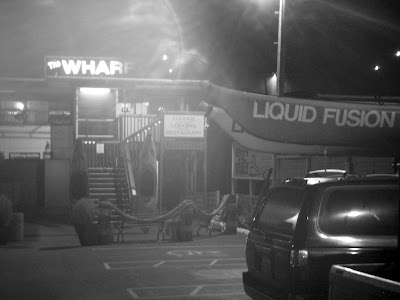Nov 26 2011
CAR – Crab, Abalone, Rocks
A storm out of the Aleutian Islands is heading our way. The marine forecast for the next couple of days are for gale force winds, combined seas in the 15-20 foot range and rain. As the storm brewed and winds started to pick up, we figured that we better get out and stock up on food and play. Our whitewater paddling buddy Nick joined us for the adventure.

A 10 knot southerly breeze had started with some gusting in the 15-20 knot range. The texture on the water was definitely showing the effect of southern winds with occasional whitecaps on the outer waters. Our plan was to paddle our sea kayaks out of the Noyo Bay, drop our crab pots, play in some rock gardens, abalone dive, and then pull our pots and head for home.

Of course, we could have dropped our crab pots in the protected areas of Noyo Bay, but instead had to charge out to where things get interesting. I think that Jeff wants to simulate the drama of Deadliest Catch on our crabbing missions. We are definitely getting a lot of towing practice on our sea kayak crabbing adventures.
We dropped our pots and off we went in search of adventure and abalone. First we paddled into a favorite spot and had to stop and admire the US Coast Guard plane doing maneuvers out at sea. This is not an everyday occurrence on the Mendocino Coast, and it was fun to watch.

The area where we were going to play and dive was really gusty with the southerly winds so we modified plans and tucked into a more protected area. Despite the small swell, Nick and I had some fun rides while Jeff took photos and prepared to dive for abalone.

Both Nick and I regretted that we didn’t bring our dive gear. Jeff plucked his abs easily but lingered in the water for a bit marveling at the beauty of the vibrant underwater colors of sea life.

Eventually the fish got out of the water and we strategized how to pull our crab pots in the windy conditions. I was going to pull the pots as Jeff used a tow to keep me from drifting into the kelp and onto a reef. Nick was going to stabilize my boat and help with strapping the pots onto my boat.

I was excited to get to pull the pots and be the first to see our catch of the day. I was a little apprehensive though as the last time we pulled a pot in this area there was a giant octopus on it (feeling crabby). The first pot that I pulled didn’t feel heavy so I knew that there wasn’t a giant octopus on it. It also didn’t feel heavy with crabs. There were 3 crabs in it though. One was a nice sized dungeness crab. Into the cockpit of my boat he went.

When we pulled the next pot, I was excited to see 2 crabs. One didn’t look right though. He was a beautiful dark red color and had latched his claws onto the bars of the trap. It was a rock crab. It took some finagling to get him to let go and out of the trap. After I got him to let go of the cage, he latched on to my finger. OUCH!!! Fortunately I was wearing my gloves and he didn’t break the skin. I got him off and happily sent him on his way back into the drink.
Back to shore we paddled – happy that we had 3 abalone, a crab, and a fun day on the water.



























































